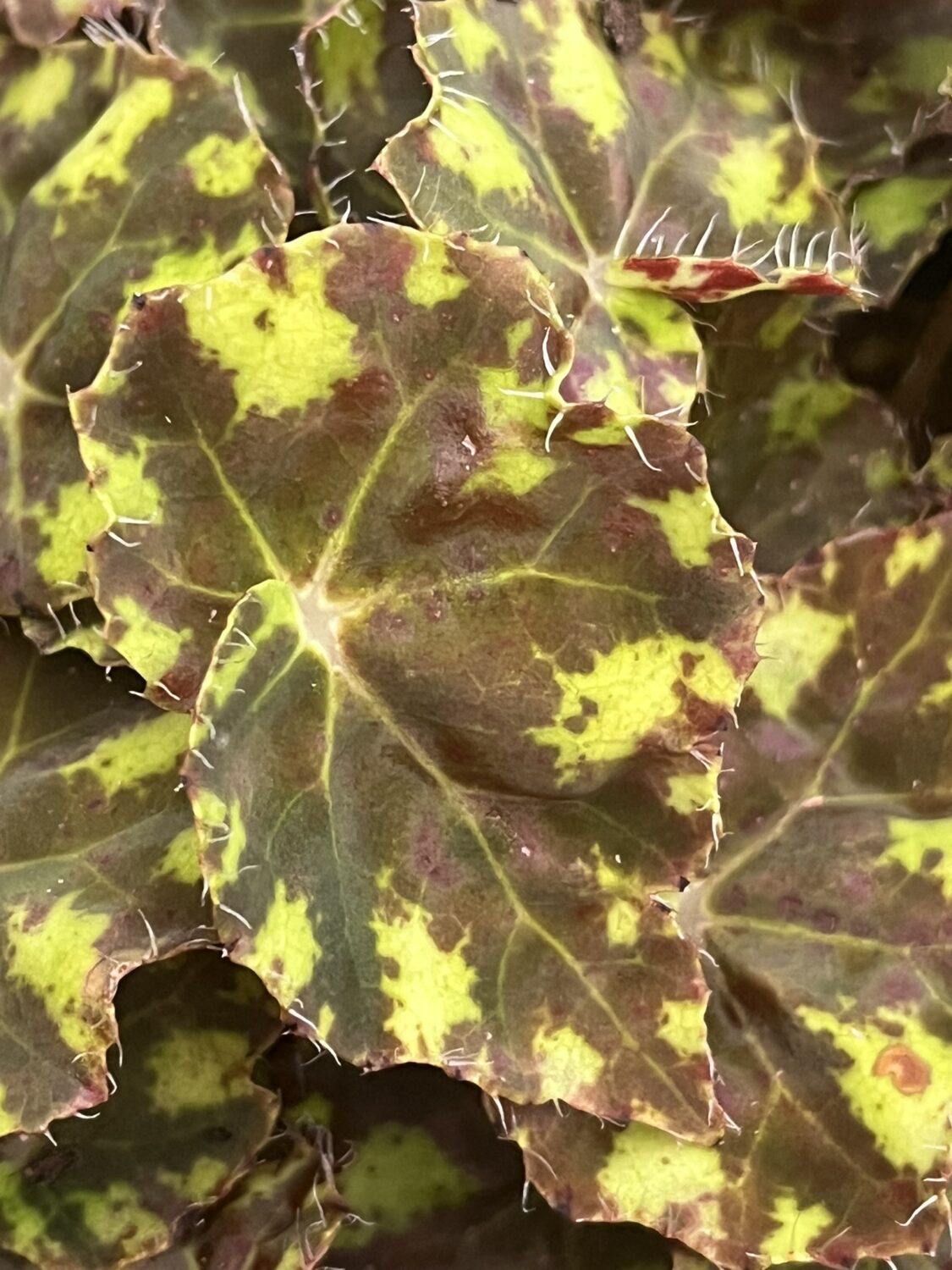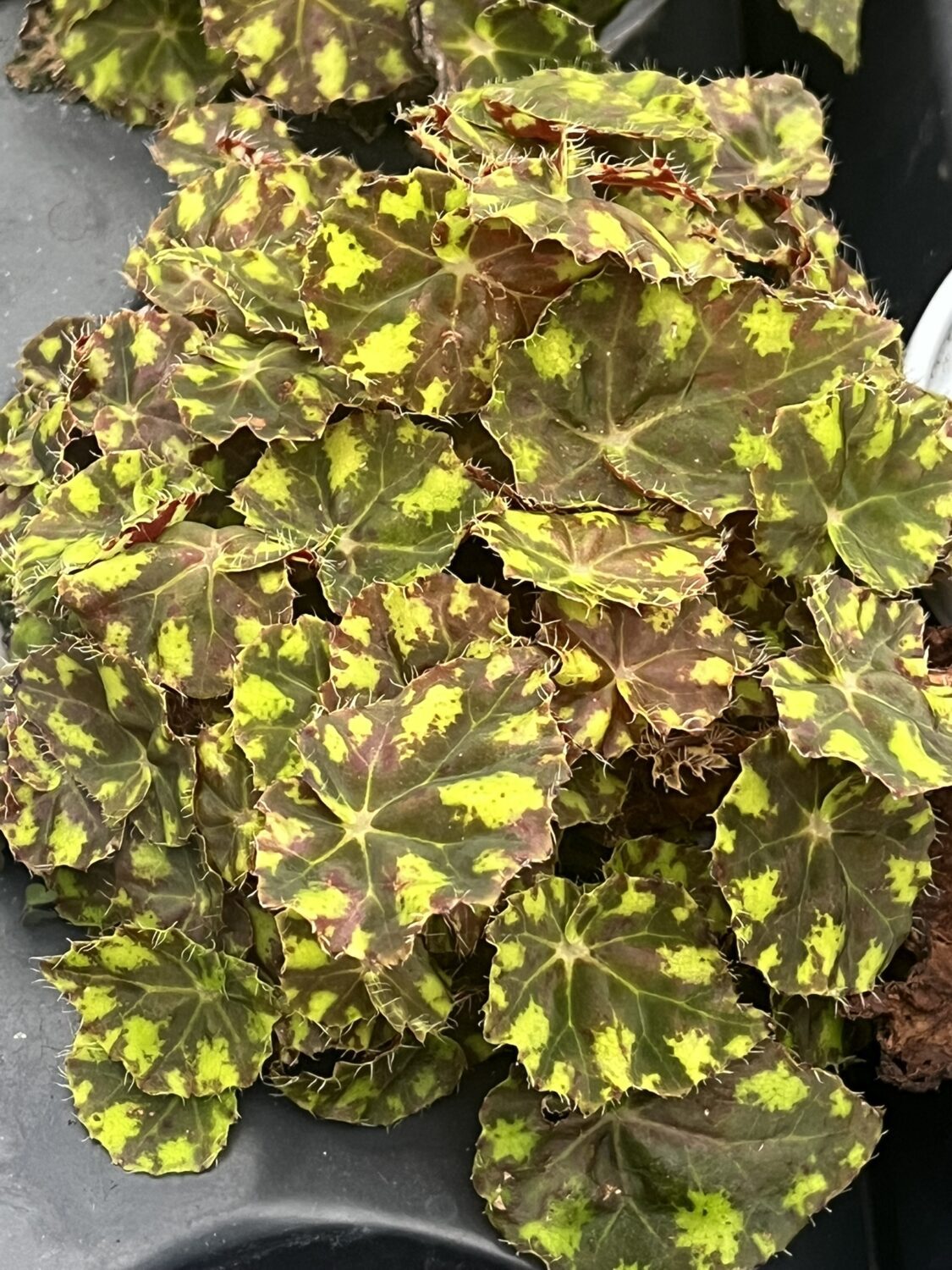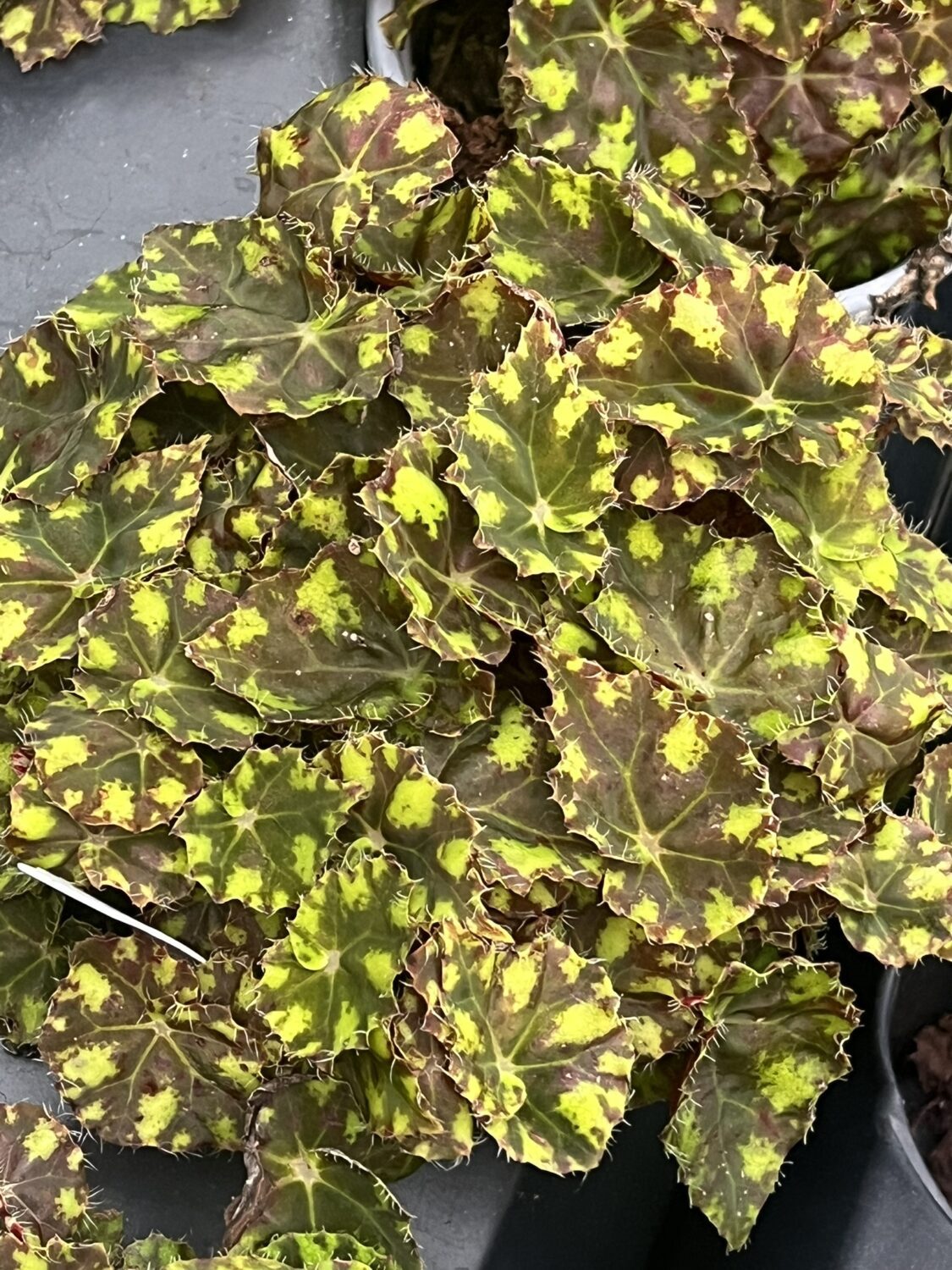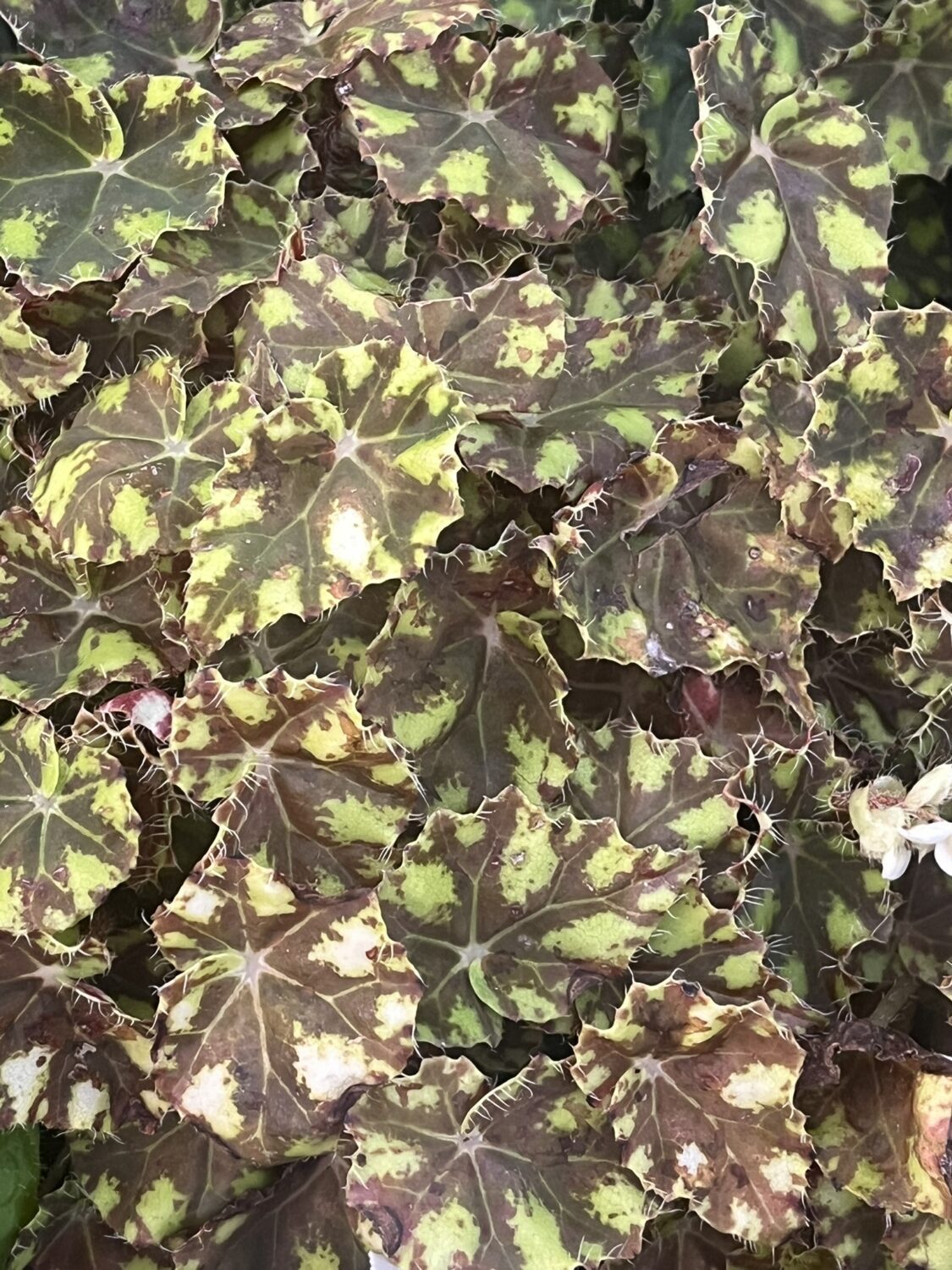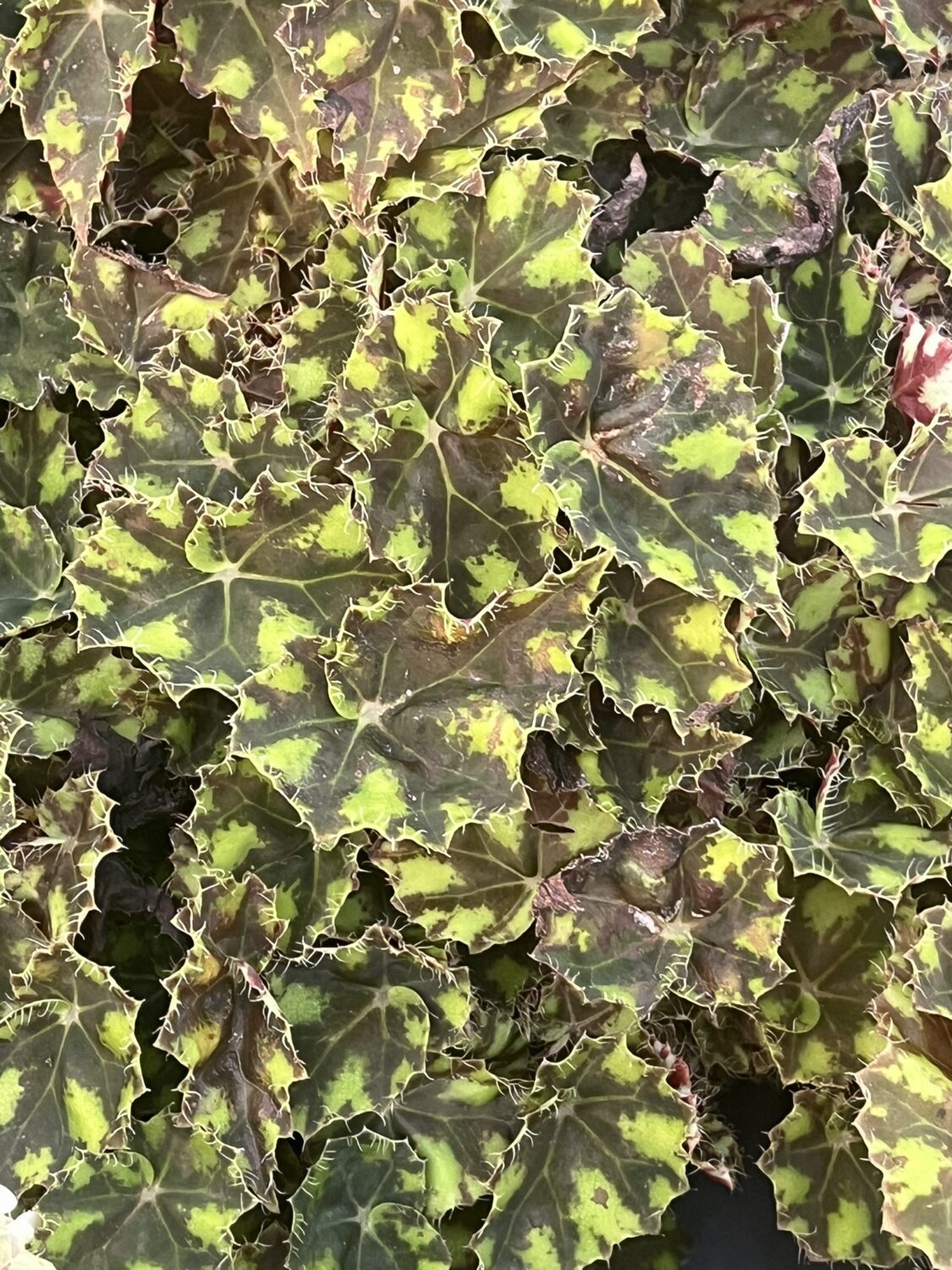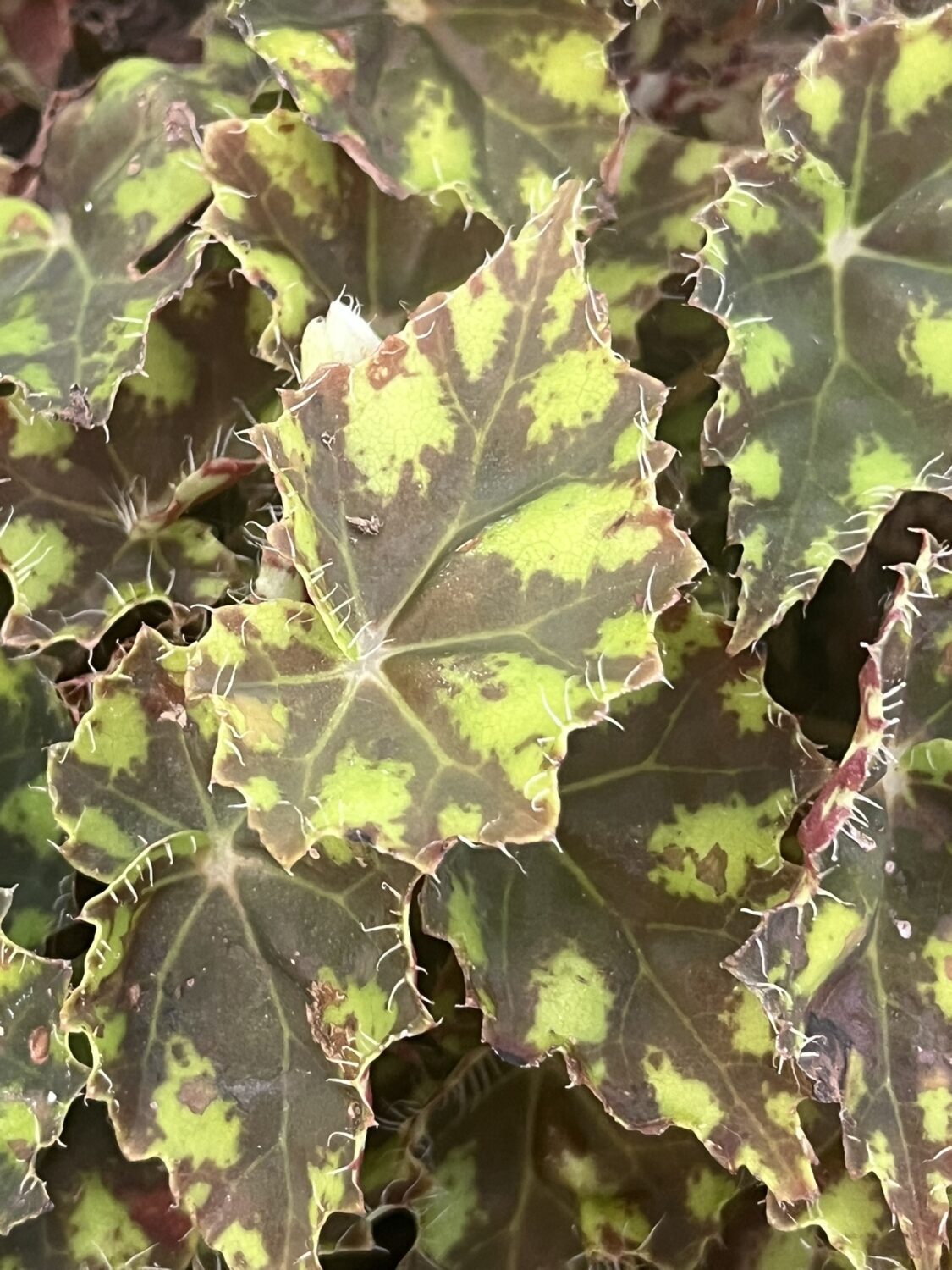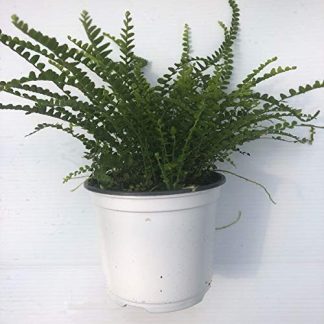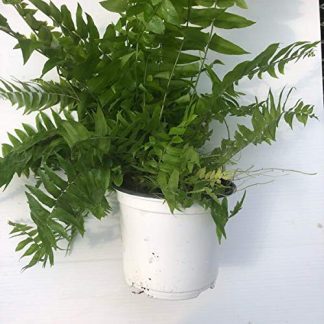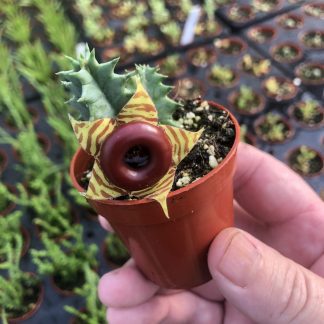Description
Rhizomatous Begonia ‘Tiger Kitten’: A Compact Gem for Indoor Gardens
Rhizomatous Begonia ‘Tiger Kitten’ is a delightful plant that wins hearts with its striking foliage and charming size. Its vibrant green leaves are sprinkled with golden-yellow spots, creating a playful tiger-like pattern that feels both exotic and fun. Compact and low-growing, this begonia is perfect for terrariums, windowsills, or as part of a mixed plant collection where its unique colors can shine.
Even better, it’s not fussy. With just a little attention, ‘Tiger Kitten’ rewards you with dense mounds of patterned foliage and, in season, soft white or pale pink flowers that add a delicate touch to its bold leaves. Whether you’re a seasoned collector or just starting your indoor plant journey, this begonia makes a charming addition to your home.
Why ‘Tiger Kitten’ Stands Out
-
Compact beauty: Perfect for small spaces like windowsills or shelves.
-
Unique patterns: Striking golden spots resemble a tiger’s markings.
-
Low-maintenance nature: Ideal for beginners and collectors alike.
-
Tropical appeal: Thrives in warm, humid environments indoors.
How to Grow and Care for Rhizomatous Begonia ‘Tiger Kitten’
This plant is easygoing but thrives when you meet its basic needs. Here’s how to keep it healthy and happy.
1. Propagation Made Simple
‘Tiger Kitten’ spreads through rhizomes, making propagation straightforward. You can multiply your plant in three ways: rhizome division, stem cuttings, or leaf cuttings.
Rhizome Division (Best Method)
-
Remove the plant from its pot and locate healthy rhizome sections with roots and leaves.
-
Use a clean, sharp knife to cut sections, ensuring each has at least one growth node.
-
Let cut edges dry for a few hours to reduce rot risk.
-
Plant in shallow pots filled with moist, well-draining soil.
-
Place in bright, indirect light and water lightly until new growth appears.
Leaf Cuttings
-
Select a healthy leaf and cut it with a bit of petiole attached.
-
Place the petiole into moist soil or lay the leaf flat and make small cuts along the veins.
-
Cover with plastic wrap to maintain humidity and keep in bright, indirect light.
-
New plants will form along the cuts in a few weeks.
2. Light Needs
Bright, indirect light is key. Too much sun can scorch the leaves, while too little causes dull colors and weak growth.
-
Indoors: Best near east- or north-facing windows. If using a south or west window, filter light with sheer curtains.
-
Outdoors (warm climates): Place in shaded or semi-shaded areas to protect from harsh sun.
3. Soil Preferences
‘Tiger Kitten’ needs soil that drains well but holds some moisture. A loose mix encourages healthy root growth.
Recommended mix:
-
2 parts potting soil
-
1 part perlite or coarse sand
-
1 part peat moss or coconut coir
This blend ensures moisture retention without waterlogging.
4. Watering Guidelines
Consistency is crucial. Overwatering can lead to rot, while underwatering can dry the plant out.
-
Water when the top inch of soil feels dry.
-
Use room-temperature water to avoid shocking roots.
-
Keep water off the leaves to prevent spots or fungus.
-
Water more often in spring and summer (active growth). Reduce slightly in fall and winter.
5. Temperature and Humidity
This begonia loves warmth and humidity, similar to its tropical origins.
-
Temperature: 65–75°F (18–24°C). Avoid temperatures below 55°F (13°C).
-
Humidity: Prefers 50% or higher. Use a humidifier, pebble tray, or misting to boost moisture in dry homes.
Keep away from drafts, heaters, or sudden temperature shifts.
6. Fertilizing for Vibrant Growth
Feeding helps maintain lush foliage and rich patterns.
-
Use a balanced, water-soluble houseplant fertilizer at half strength.
-
Apply every 4–6 weeks during spring and summer.
-
Skip feeding during fall and winter when growth slows.
-
Flush soil occasionally with water to prevent salt buildup.
7. Pruning and Maintenance
Pruning keeps your plant looking tidy and encourages new growth.
-
Remove yellowing or damaged leaves regularly.
-
Trim leggy stems to promote a bushier shape.
-
Deadhead spent flowers so energy returns to foliage.
Bonus: Pruned leaves and stems can be used for propagation.
8. Pest and Disease Prevention
‘Tiger Kitten’ is fairly hardy but can sometimes attract pests.
-
Watch for: Spider mites, mealybugs, and aphids.
-
Treatment: Wipe leaves with a damp cloth or spray with mild soapy water. Neem oil works for persistent pests.
Disease tips:
-
Avoid soggy soil to prevent root rot.
-
Ensure good airflow to prevent mold or mildew.
-
Water early in the day so moisture can evaporate.
9. Repotting
Repot every 1–2 years to refresh soil and give rhizomes space to spread.
-
Choose a pot 1–2 inches wider than the current one.
-
Use fresh, well-draining soil.
-
Keep the rhizome slightly above the soil surface when repotting.
-
Water lightly after repotting to help the plant settle.
10. Extra Care Tips
-
Rotate the pot every few weeks for even growth.
-
Wipe leaves with a damp cloth to keep patterns vibrant.
-
Monitor for stress signs (like leaf curling or discoloration) and adjust care as needed.
-
Use shallow pots to suit its rhizomatous growth habit.
Why You’ll Love Growing ‘Tiger Kitten’
‘Tiger Kitten’ isn’t just beautiful—it’s easygoing and rewarding. Its playful spotted leaves add charm to any collection, while its compact size makes it perfect for small spaces. With minimal care, this begonia thrives and becomes a conversation starter in your home.
A Touch of Whimsy in Your Plant Collection
Growing Rhizomatous Begonia ‘Tiger Kitten’ is about more than keeping a plant alive. It’s about enjoying color, texture, and the small joys of nature indoors. This little begonia adds character to any shelf, brightens terrariums, and complements other tropical plants with ease.
Bring one home, and watch how quickly it becomes a favorite in your indoor garden.

